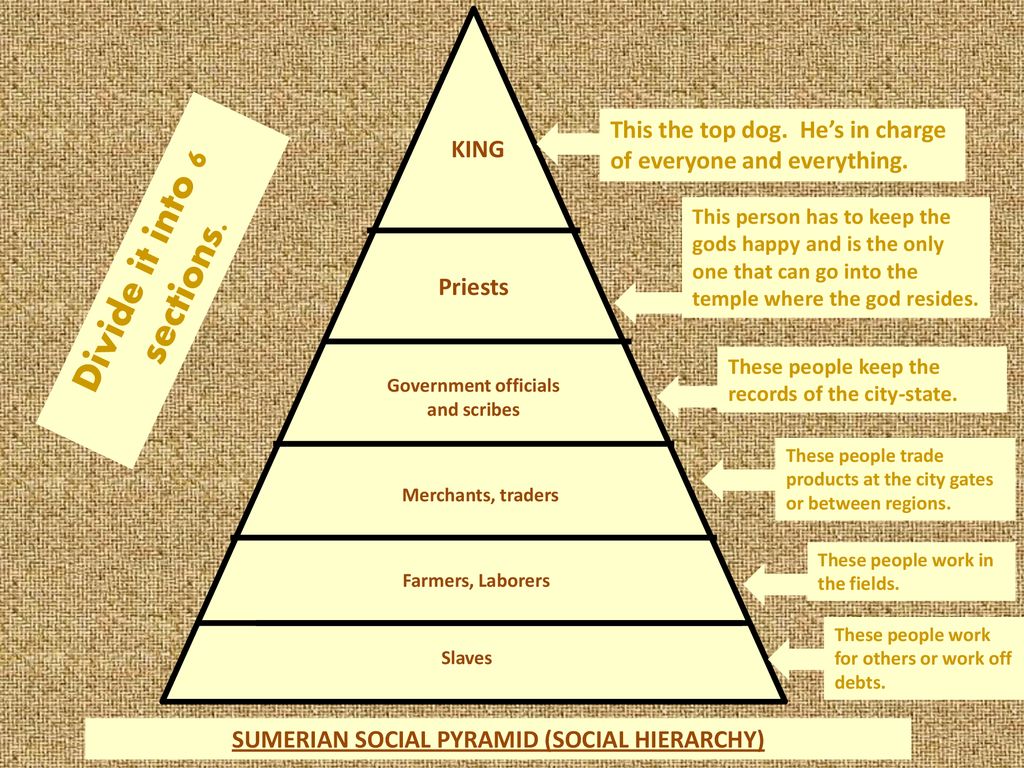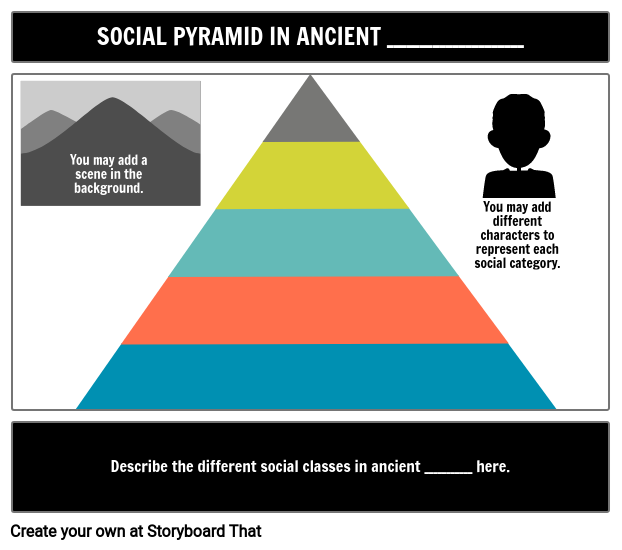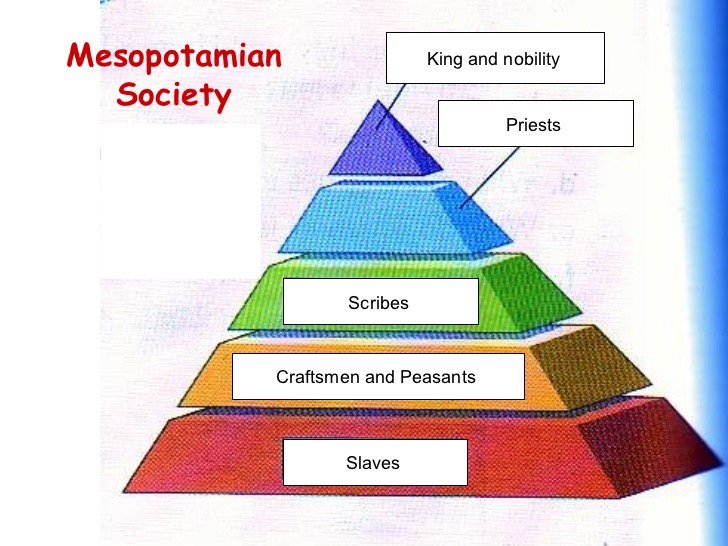Unveiling Ancient Mesopotamia: Social Structure & Classes Explained
What if we could journey back in time, not just to witness the grandeur of ancient Mesopotamia, but to truly understand the very fabric of its society? The social structure of Mesopotamia, a civilization that flourished thousands of years ago, offers a captivating glimpse into how people lived, worked, and interacted with one another, revealing a complex hierarchy that shaped their daily lives and cultural expressions.
Mesopotamia, often hailed as the "cradle of civilization," wasn't merely a collection of cities and empires; it was a society meticulously structured, with each layer of its pyramid-like social order playing a vital role. Understanding this structure provides invaluable insights into the values, beliefs, and power dynamics that governed life in this ancient world. This was a society where one's place determined not only their opportunities, but also their very identity, influencing their daily existence, habits, and even their appearance.
To appreciate the intricacies of Mesopotamian society, consider this breakdown, which provides a vivid representation:
- Karoline Leavitt Parents Bob Erin Leavitt Age Background
- Hdhub4ukiwi Streaming Risks Alternatives Movies Shows
| Social Class | Roles & Responsibilities | Key Characteristics | Examples |
|---|---|---|---|
| King | Supreme ruler, religious leader, commander-in-chief | Considered divine, controlled resources, oversaw laws and justice. | Hammurabi, Sargon of Akkad. |
| Nobility | High-ranking officials, landowners, military leaders | Held significant power, controlled vast estates, advised the king. | Royal family members, governors, generals. |
| Priests/Clergy | Managed temples, conducted religious rituals, interpreted the will of the gods. | Held immense influence, controlled religious institutions, administered religious law. | High priests, temple officials. |
| Scribes & Merchants (Upper Class) | Recorded laws, managed trade, facilitated commerce. | Literate, possessed specialized skills, controlled wealth and resources. | Scribes, wealthy traders, skilled artisans. |
| Free Citizens (Middle & Lower Class) | Farmers, artisans, craftspeople, laborers. | Varied occupations, owned land or businesses, paid taxes. | Farmers, blacksmiths, potters, merchants. |
| Slaves | Performed manual labor, often owned by the upper classes. | No rights, considered property, could be acquired through debt, capture, or punishment. | Domestic servants, field laborers, temple workers. |
Britannica: Mesopotamia - Society and Culture
At the apex of this societal pyramid resided the king, often viewed as a divine ruler or a representative of the gods. Below the king, the nobility, including his family, along with priests and military leaders, formed the upper echelons of power and influence. The clergy played a vital role in Mesopotamian life, managing temples, conducting religious rituals, and interpreting the will of the gods. Their influence permeated every aspect of society.
The upper class consisted of scribes and merchants. Scribes, highly valued for their literacy, meticulously recorded laws, managed trade, and facilitated communication. Merchants controlled trade, accumulating wealth and establishing connections throughout the region. The middle class, including artisans, craftspeople, and metal workers, formed the backbone of the economy. Skilled in their trades, they produced essential goods and services that sustained society.
- Go Movies Streaming Guide Find Films Alternatives Now
- Pinayflix Latest Sex Videos Scandal Updates Watch Now
Free citizens, comprising farmers, laborers, and servants, constituted the majority of the population. Their lives revolved around agriculture, tending the fields, and producing food. The lower class of Mesopotamian society was represented by slaves. Enslaved individuals performed manual labor, often working in the fields, in homes, or as temple servants. Slavery was a stark reality, and the legal codes, such as the Code of Hammurabi, explicitly addressed the status and treatment of slaves. It is important to note that slavery, in this era, could result from debt, capture in war, or punishment for crimes.
The societal structure directly impacted various aspects of Mesopotamian life. Monuments such as ziggurats, temples, and palaces were constructed to honor the gods and showcase the power and affluence of the ruling class. Furthermore, the division of labor, determined by social class, was a key component in the development of this civilization. Specialization led to the creation of diverse crafts and professions, resulting in increased productivity and economic growth.
The structure of society, like the architectural design of their ziggurats (stepped temple towers), reflected their worldviews. The emperor or king always occupied the highest position in the social pyramid. The middle class comprised the regular types, the artisans and craftspeople. This pyramid represented a clear hierarchy of power and influence.
The social pyramid wasn't just a static arrangement; it was a dynamic system that influenced every aspect of life. An individual's social class determined their access to resources, their rights, their opportunities for advancement, and even their daily habits and appearance. The ability to move between classes was limited, reinforcing the rigid structure.
For example, the construction of monumental structures such as ziggurats, were not merely religious structures; they were symbolic representations of the social order, with the king and the gods at the top. The ziggurats, the earthly homes of gods, were not tombs for kings. The ziggurats were in prominent areas, unlike the pyramids which were built outside populated areas.
The origins of social classes can be traced back to ancient civilizations, where systems emerged to organize labor, distribute resources, and maintain social order. In Mesopotamia, this specialization of labor shaped the society. An individual's work determined the social class to which they belonged.
The daily lives of Mesopotamians were shaped by their social class. Those in the upper classes enjoyed greater privileges, access to education, and control over resources. The lower classes, on the other hand, often faced hardship and were subject to the demands of those in positions of power.
Even the legal system reflected the social hierarchy. The Code of Hammurabi, one of the oldest known legal codes, included different punishments based on social class, further illustrating the stratification of Mesopotamian society. For example, if a noble harmed a member of the lower class, the penalties might vary significantly compared to if a lower-class individual committed the same offense against a noble.
The social structure also had a profound effect on the culture, religion, and art of the civilization. Monuments like ziggurats, temples, and palaces were built to honor the gods and to showcase the power and wealth of the ruling class. The arts and crafts flourished, with artisans creating intricate objects reflecting the values and beliefs of Mesopotamian society.
Within this framework, women played important roles, with some even holding positions of authority. Women were doctors and dentists. Understanding these complex social structures is key to unlocking the secrets of this cradle of civilization.
The hierarchical organization, the specialization of labor, and the distinct roles of each class combined to form a complex and dynamic society. The echoes of this ancient world still resonate, offering insights into the rise and fall of civilizations and the enduring impact of social structures on human history.
To fully understand the ancient world of Mesopotamia, one must journey beyond its magnificent ruins and decipher the intricacies of its social structure, as the echoes of their civilization still reverberate through time.



Detail Author:
- Name : Ms. Nellie Sporer Sr.
- Username : ncruickshank
- Email : swift.kelton@hotmail.com
- Birthdate : 1976-05-23
- Address : 7450 Waters Glen Apt. 470 Rempelville, NC 03109
- Phone : 559-472-3488
- Company : Batz Inc
- Job : Highway Maintenance Worker
- Bio : Repudiandae et ut at. Tempora similique eaque inventore velit maiores. Tempora sint ipsa unde doloribus amet. Deserunt magnam vel voluptatem totam nemo.
Socials
tiktok:
- url : https://tiktok.com/@archibaldkoss
- username : archibaldkoss
- bio : Eligendi id veritatis eos quia. Qui cupiditate ea aut aut est.
- followers : 6258
- following : 1672
facebook:
- url : https://facebook.com/archibald_xx
- username : archibald_xx
- bio : Debitis ut eius id ut est sed repellendus.
- followers : 2541
- following : 2221
twitter:
- url : https://twitter.com/koss1996
- username : koss1996
- bio : Culpa maxime totam libero quo. Nobis hic aperiam soluta ut.
- followers : 2386
- following : 1315